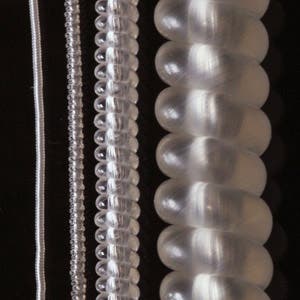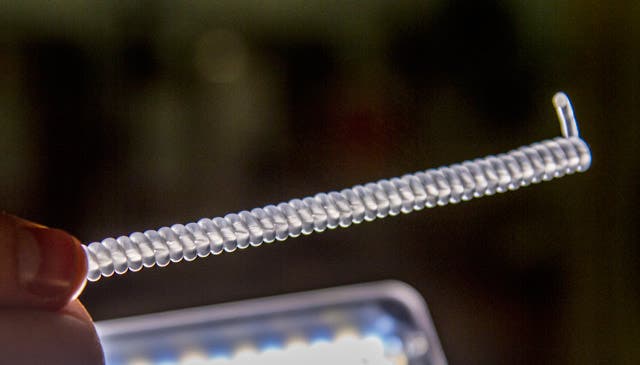Sometimes, I come across stories or various research that make me wonder “why the heck hasn’t anyone else thought of this before?” We should be grateful, nevertheless, that researchers from University of Texas at Dallas have found a way to manufacture artificial muscle that is up to 100 times stronger than the flimsy tissue that makes up the human biceps. The material is made out of nylon fibers – the stuff fishnets are made of – that are tensed almost to the upper limit and thermal processed to retain a high energy density.
Like very thin springs, the synthetic muscle is cheap, easy to make and durable. Of course it has some drawbacks, however the researchers envision its introduction in the industry extremely fast considering the facts. Applications include artificial muscles for robots, exoskeleton suits, or automatically heat-regulated window shutters and ventilation systems.

Photograph comparing muscles made by coiling (from left to right) 150 μm, 280 μm, 860 μm and 2.45 mm nylon 6 monofilament fibers. Photo: Science
The process through which the synthetic sinew is coiled is quite trivially simple. Basically, it boils down to making sure you apply the right tension and weight to the thread when twisting it. Actually, according to the scientists involved in the work, similar nylon coils like the ones they produced can be made by regular people at home.
Nylon or polyethylene gets twisted under high tension over and over again until it reaches a certain strain threshold. Once the plastic can’t twist any more, it starts to coil up on itself like a curled telephone cord. The coil is then thermally treated so it gets locked in place; along with energy stored in the coil. When the resulting coil is heated, it begins to untwist, but in the process the whole whole material begins to compress.
“At first it seems confusing, but you can think of it kind of like a Chinese finger-trap,” says Ray Baughman, a materials scientist with the team. “Expanding the volume of the finger-trap, or heating the coil, actually makes the device shorten.”
By braiding and twisting different threads together and coiling them in different ways, you can end up with different kinds of variations in muscle strength, depending on the kind of application you’re looking for. Also, by blending in conductive wire or wrapping the muscle with a light-absorbing coating, the researchers can control the muscles’ movements with electricity and light instead of direct heat.
At the moment, the nylon artificial muscle isn’t all that efficient. While work is presently underway to solve inefficiency issues, by itself, even in its current form, this research is extremely impressive and will most likely get used in real-world applications real soon. It also is a great example of what you can achieve with readily available materials and technology just by applying novel tricks and strategies.
You can find out more in the paper published just today in the journal Science.










